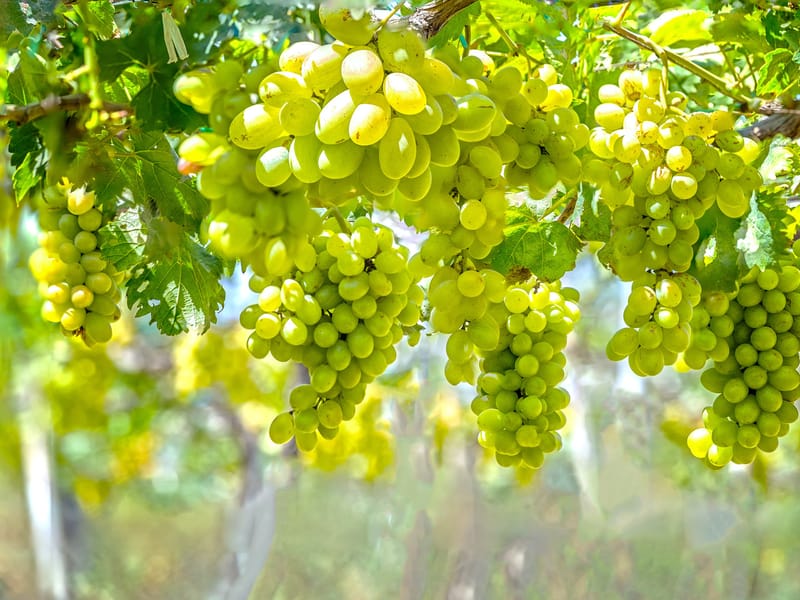Wine sector sees signs of adjustment, but red stocks remain high
A MAJOR industry report shows stocks of Australian red wines – including those produced in the Riverland and Barossa – are beginning to drop, however challenges remain in increasing overseas exports. Total sales of Australian wine exceeded...

A MAJOR industry report shows stocks of Australian red wines – including those produced in the Riverland and Barossa – are beginning to drop, however challenges remain in increasing overseas exports.
Total sales of Australian wine exceeded production for the second year in a row, following successive small vintages, according to the Australian Wine Production, Sales and Inventory Report 2024, recently released by Wine Australia.
Wine production was just over 1 billion litres (116 million, 9L cse equivalents), an 8 per cent increase compared with 2022–23, but still the second-smallest reported production in 17 years, and 16 per cent below the 10-year average of 1.24 billion litres.
Wine Australia manager market insights Peter Bailey said the below-average production from the small 2024 vintage was the result of a combination of seasonal factors and economic and market conditions.
“This was another difficult season in many regions, with heavy rainfall and flooding, widespread windy conditions affecting flowering, and dry spring weather leading to cold nights and the potential for frost damage,” Mr Bailey said.
“However, the result has also stemmed from deliberate decisions by grape growers and wine businesses to reduce production or intake, driven by the current economic and market conditions affecting demand for wine.”
The overall increase of 8 per cent, compared with 2022–23, was made up of a 20 per cent increase in white wine production, partly offset by a 2 per cent decrease in red wine production.
This saw white wine’s share of production increase from 46 per cent to 51 per cent — the first time in 12 years the production of white wine has exceeded that of red wine in Australia.
Mr Bailey said this change reflected adjustments made by the sector to counter the oversupply of red wine that had arisen over the past three years.
Sales volume decline despite reopening of China market
The total volume of sales of Australian wine in export and domestic markets was 1.08 billion litres. This was a decrease of 1 per cent compared with 2022–23, with both domestic and export sales showing very small declines.
Contrary to the change in share of production, white’s share of total sales declined due to 4 per cent growth in red wine exports.
Mr Bailey explained the growth in red wine exports was driven by the re-commencement of exports to mainland China, following the removal of import tariffs in late March 2024. The volume of exports to China grew from 1 million litres to 32 million litres (5 per cent of total wine exports) in the 2023–24 financial year, almost all of which (96 per cent) was red table wine.
However, Mr Bailey cautioned this was likely to represent the re-stocking of Australian wine in the market after a long absence, and may fail to equate to retail sales.
“It will take some time before there is a clearer picture of how Chinese consumers are responding to the increased availability of Australian wine in–market,” he said.
Two consecutive small vintages contribute to reduction in stock overhang
Despite the decline in sales, the below-average production meant sales exceeded production, with the combined shortfall over the past two years being estimated at 155 million litres.
This contributed to a 10 per cent reduction in inventory, as at 30 June 2024, and a corresponding decrease in the stock-to-sales ratio (SSR), which fell by 14 per cent to 1.82. The SSR for white wine fell to below its 10-year average, while the SSR for reds remained 15 per cent above its 10-year average, despite falling by 23 per cent over the past two years.
Mr Bailey said the latest data shows stocks moving in the right direction, but only as a result of the small vintages, rather than growth in sales.
“The survey results indicate that stock-to-sales ratios have reduced, and production and sales are closely aligned,” he said.
“However, that is based on the current production levels, which are well below the long-term average.
“Any increase in production is likely to result in stock levels rising again, unless there is a corresponding increase in sales.
“This is a particular concern for reds, where the stock-to-sales ratio is still well above the long-term average.”
Global market conditions remain challenging
Mr Bailey noted the global outlook for Australian wine remains challenging. World wine consumption has continued to decline over the past 12 months and is expected to decline further in the next five years, driven by economic constraints, overall alcohol moderation trends and competition for wine from other beverages.
“There are no easy solutions for increasing sales,” Mr Bailey said.
“Total global wine imports to China have fallen by two-thirds since 2017, so it is unlikely we would return to our previous level of exports to that market.
“Meanwhile our wine sales to the rest of the world, including Australia, have been under pressure for the past several years as consumption has declined and competition has increased.
“We are unlikely to see a return to our previous average of 1.2 billion litres in the next few years.”
The Australian Wine Production, Sales and Inventory Report 2024 can be downloaded by visiting the website (www.wineaustralia.com/market-insights/australian-wine-production-sales-and-inventory).





